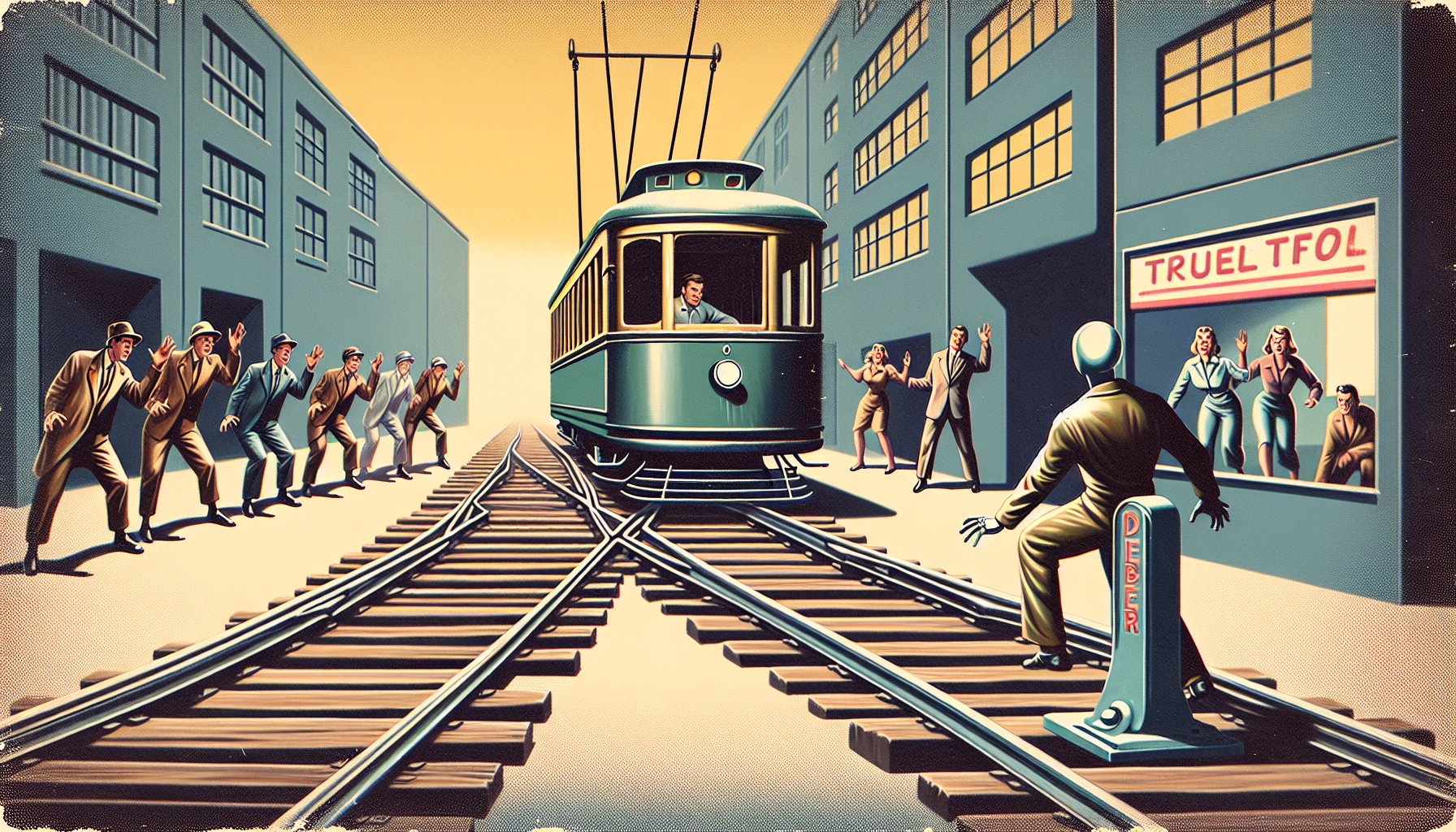Picture this: A trolley barrels towards five unsuspecting workers on a track. You stand by a lever. If you pull it, the trolley diverts to another track—where it will endanger just one person. This is, of course, the Trolley Problem, philosophy’s favorite ethical exercise and perhaps the only moment in moral philosophy where trains run on time. But here’s the twist: What if the hand on the lever belongs not to a harried bystander, but to a machine? And not just any machine—a self-driving car, or a crisply logical AI managing energy grids or hospital triage? What happens when a coldly rational entity is faced with a terribly human dilemma?
The Age of Algorithmic Dilemmas
Self-driving cars are the poster child for this predicament. Imagine a car must choose: swerve left and harm a jaywalking pedestrian, or swerve right and risk its passenger. Suddenly, the abstract becomes alarmingly concrete. An AI, indifferent to fear, guilt, or self-preservation, must compute who is spared, who is sacrificed.
The Trolley Problem, once reserved for late-night debates and endlessly recycled in undergraduate philosophy classes, has migrated into the code of our most advanced machines. The difference? Human hesitation has been replaced by microsecond calculation. No cold sweats; just cold logic.
What’s So Hard About a Simple Choice?
At first glance, the Trolley Problem is simple arithmetic: save five, lose one. But if you’ve ever tried to design your own ethical system (ideally with less disastrous results than most philosophers), you’ll know that life resists tidy bookkeeping. Our sense of right and wrong is messy—influenced by empathy, context, culture, and our own penchant for contradictory reasoning.
Autonomous machines, however, don’t “feel” bad about whichever choice they make. Their task is to implement whatever values we’ve programmed into them. Quick question: what are those values? Consensus is elusive. Some argue a utilitarian approach—do the most good for the most people—should reign. But what about fairness? The elderly versus the young? Law-abiding citizens versus reckless rule-breakers? Our trolley has many tracks, and each runs through a thicket of competing values.
Whose Morality Gets Programmed?
If you’re worried, you have company. The question isn’t just what should a machine do—but whose notion of “should” matters? German philosophers, American lawyers, and Chinese engineers might all reach different conclusions. Even within a single society, preferences clash: Should we protect passengers at all costs, or prioritize bystanders? Is it fair for car manufacturers to bake in a bias that always saves those inside their vehicles?
Imagine a software engineer somewhere, coding the ethical engine of the next AI. Will they encode the Hippocratic “first, do no harm,” or the cold calculus of numbers? And what happens when two machines with slightly different programming make opposite choices in identical situations? Who gets to be right?
Accountability on Autopilot
Once, responsibility for bad outcomes landed on human shoulders. We could examine intentions, context, and just plain luck. But algorithms, once unleashed, leave no fingerprints. If an autonomous car chooses wrongly, do we blame the manufacturer, the programmer, the laws passed by parliament, or the collective morals of a distant culture?
We run the risk of moral outsourcing—setting machines adrift with our best-laid ethical codes, and hoping the consequences won’t surprise us. The Trolley Problem’s power lies in the burden it places on you, the human at the lever. Relieving ourselves of this burden may seem like progress, but are we comfortable letting such machines learn right from wrong in traffic, medicine, or justice?
Can Machines Care?
One could argue that Trolley Problems are uniquely human not just because of the stakes, but because of the weight we carry afterwards—regret, self-doubt, and maybe a vow never to ride the subway again. Machines can calculate, even simulate, ethics. But they cannot “care” in the way we do. The agony of decision, the heap of second-guessing, is foreign to a neural network.
Would the world be better if our hardest choices were made by entities incapable of heartache? Or is the struggle itself a critical part of morality? Perhaps perfect logic, applied ruthlessly, lacks what we consider “wisdom”—the ability to see beyond rules, to improvise compassion in a world too tangled for algorithms.
Practicalities and the Path Ahead
Of course, most days the Trolley Problem doesn’t quite show up so literally. Our machines adjudicate between shades of risk and benefit—autonomous cars brake or don’t brake, algorithms prioritize patients on waiting lists, AIs filter and flag content online. Each choice still ripples out, affecting lives and values, even if there’s no lever to pull and no bystanders to save.
The best we may achieve is transparency—knowing which values are being weighed and how. Democratic debate about these values must be part of development, not an afterthought. We are all passengers, after all, and it would be nice to know which moral tracks we’re riding on.
As for the future, perhaps the Trolley Problem will always haunt the crossroads of technology and ethics. As we let machines take the wheel—sometimes literally—our challenge is not simply to build cleverer engines and smarter software, but to embed in them a reflection of our best moral thinking. That, or we should all start taking the bus.

Leave a Reply